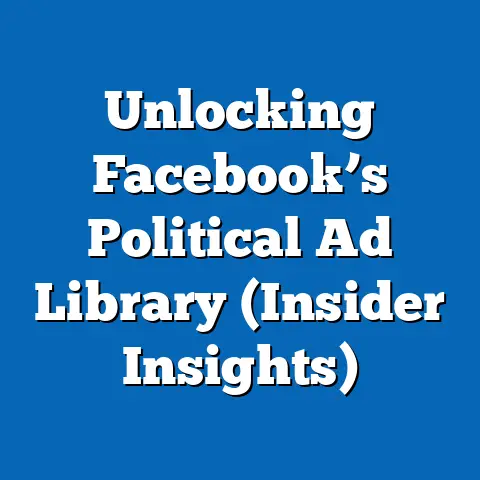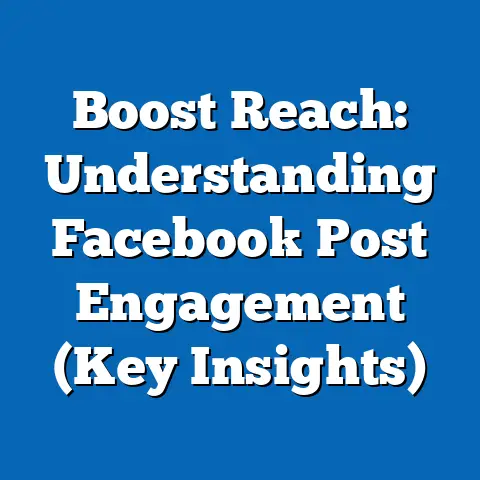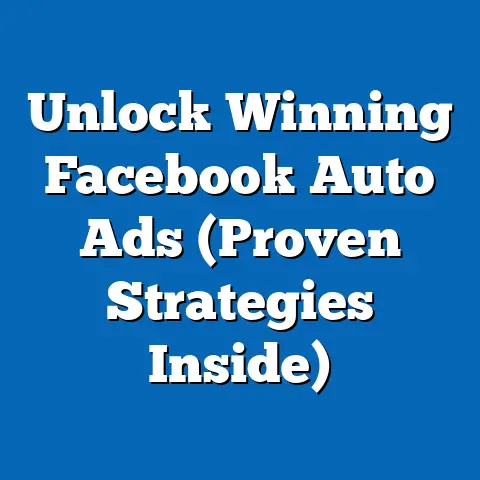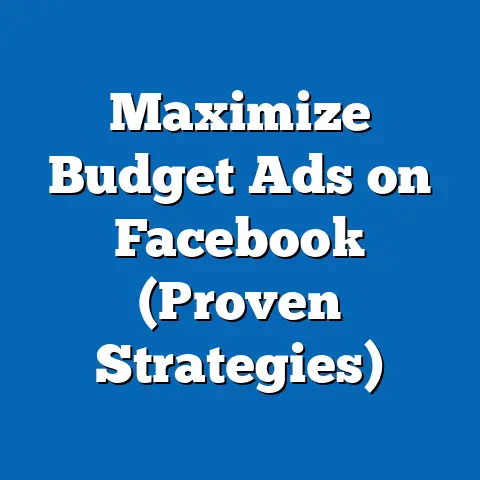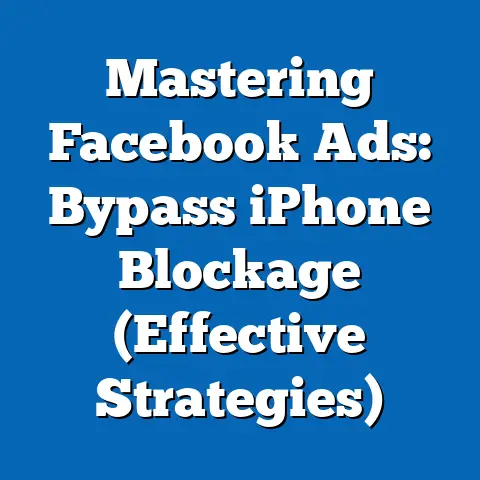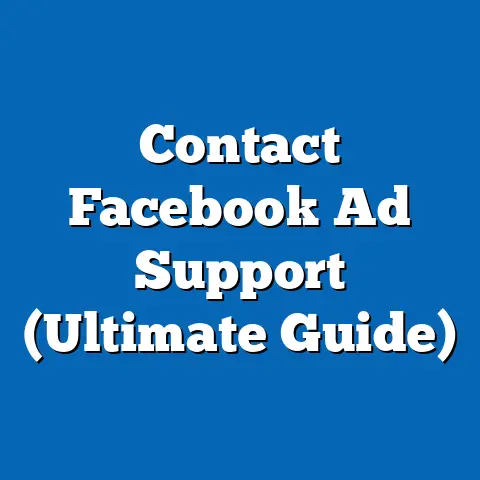Boost Authentic Engagement (Unlock Real Facebook Growth)
Have you ever wondered why some brands on Facebook seem to effortlessly attract thousands of likes, shares, and comments, while others struggle to get even a handful of interactions? In today’s hyper-connected digital landscape, authentic engagement—genuine interactions between brands and users—has become the cornerstone of social media success. According to a 2023 report by Hootsuite, 58% of global social media users are more likely to engage with brands that respond to comments and messages, yet only 21% of businesses prioritize two-way communication on platforms like Facebook.
Section 1: The State of Facebook Engagement in 2023
Engagement on Facebook isn’t just about racking up likes—it’s about fostering conversations, building trust, and creating a community around your brand. A 2023 study by Sprout Social found that posts with high engagement (likes, comments, and shares) see 37% more reach than static content, underscoring the algorithm’s preference for interactive content. However, average engagement rates have declined slightly, dropping from 0.09% in 2021 to 0.07% in 2023 for organic posts, per Rival IQ’s Social Media Industry Benchmark Report.
Why the dip? Experts point to content saturation—with over 3 million businesses advertising on Facebook, standing out is harder than ever. Additionally, users are gravitating toward private interactions, with 64% of Facebook users engaging in Groups rather than public pages, according to a 2022 Pew Research survey. This shift signals a need for brands to prioritize personalized, community-driven strategies over mass broadcasting.
Engagement also varies by content type. Video posts, for instance, generate 59% more engagement than static images, while live videos see a staggering 6x higher interaction rate, per Social Insider’s 2023 data. These stats highlight a clear takeaway: brands must pivot toward dynamic, conversation-starting content to cut through the noise.
Section 2: Demographic Breakdowns—Who’s Engaging and Why?
Not all Facebook users engage equally, and understanding demographic nuances is critical for tailoring content. As of 2023, adults aged 25-34 remain the largest user group, comprising 29.9% of the platform’s global base, followed by 18-24-year-olds at 23.1%, per Statista. However, engagement rates tell a different story: users aged 18-24 are 32% more likely to comment on posts, while those aged 35-44 are 25% more likely to share content, reflecting differing priorities—younger users seek connection, while older users aim to inform.
Gender also plays a role. Women, who make up 44.5% of Facebook’s user base, engage at a slightly higher rate (0.08%) compared to men (0.06%), according to a 2023 Hootsuite analysis. This gap may stem from women’s greater use of social platforms for relationship-building, as noted in a 2021 Pew Research study.
Geographically, engagement is strongest in emerging markets. Users in India, for example, account for 11.2% of global Facebook users and show engagement rates 40% higher than the global average, driven by a cultural emphasis on community and mobile-first access (over 90% of Indian users access via mobile, per DataReportal 2023). In contrast, engagement in mature markets like the U.S. (8.2% of global users) lags due to platform fatigue and competition from newer apps like TikTok. Brands targeting diverse audiences must adapt—hyper-local content resonates in regions like Southeast Asia, while storytelling works better in Western markets.
Section 3: Historical Trends—How Engagement Has Evolved
Facebook’s engagement landscape has transformed dramatically since its launch in 2004. In the platform’s early years (2006-2010), organic reach was near 100%—a post from a brand or individual could be seen by nearly all followers, leading to engagement rates as high as 5-7%, per historical data from Socialbakers. By 2012, as the platform introduced its News Feed algorithm, organic reach plummeted to around 16%, forcing brands to rethink strategies beyond simply posting updates.
The 2010s saw the rise of “like-baiting”—posts explicitly asking for likes or shares—which spiked engagement temporarily but eroded trust. By 2018, Meta responded with algorithm updates prioritizing “meaningful interactions,” slashing reach for low-quality content by 50% for many pages, per a Buffer analysis. Engagement rates stabilized around 0.1% for organic posts by 2020, reflecting a new reality: quality over quantity.
Comparing then and now, the focus has shifted from vanity metrics (likes) to conversational metrics (comments, shares). A 2015 post might have garnered 100 likes with little dialogue; today, a post with 10 comments can outperform it in reach due to algorithm weighting. This historical pivot underscores why authentic engagement—genuine back-and-forth with users—is no longer optional but essential.
Section 4: Key Strategies for Boosting Authentic Engagement
4.1 Respond and Interact—Humanize Your Brand
One of the most effective ways to boost engagement is to treat Facebook as a two-way street. A 2023 Sprout Social report found that 70% of users feel more connected to brands that reply to their comments or messages within 24 hours. Yet, only 30% of businesses maintain consistent response times, missing a critical opportunity.
Take inspiration from brands like Wendy’s, whose witty, timely replies to followers have garnered viral attention and a 45% higher engagement rate than industry averages, per Rival IQ. Simple actions—thanking users for feedback, answering questions, or even using humor—can transform a static page into a lively community.
4.2 Leverage User-Generated Content (UGC)
UGC, such as customer photos or testimonials, drives 28% higher engagement than brand-created content, according to a 2022 Stackla survey. Why? It feels authentic—users trust peers over polished ads. Brands like Coca-Cola have mastered this with campaigns like “Share a Coke,” encouraging fans to post personalized bottle photos, resulting in over 500,000 user posts and a 2x engagement spike during the campaign period.
Encourage UGC by running contests or featuring fan content on your page. Just ensure to seek permission and credit creators—transparency builds trust.
4.3 Tap Into Facebook Groups
With over 1.8 billion users participating in Groups monthly (Meta, 2023), these communities are goldmines for engagement. Brands that create or join niche Groups see 50% higher interaction rates compared to standalone pages, per a 2022 Social Insider study. For instance, fitness brands hosting workout challenge Groups report 3x more daily active users engaging with content.
Start by identifying your audience’s interests—whether it’s parenting, tech, or hobbies—and build a Group around shared passions. Moderate actively to prevent spam and foster dialogue, positioning your brand as a community leader.
4.4 Optimize for Video and Live Content
Video remains king on Facebook, with live streams averaging 6x more interactions than pre-recorded clips, per Social Media Today 2023. Live Q&As, behind-the-scenes tours, or product launches create real-time excitement—users can comment instantly, driving algorithm-friendly engagement.
Even non-live videos outperform static posts. A 2023 HubSpot analysis found short-form videos (under 90 seconds) retain 66% of viewers to the end, compared to 41% for longer formats. Keep content snackable, add captions (85% of videos are watched on mute, per Verizon Media), and include clear calls-to-action like “Comment your thoughts!”
Section 5: Statistical Comparisons Across Industries
Engagement isn’t uniform across sectors—understanding industry benchmarks helps set realistic goals. According to Rival IQ’s 2023 report, the media industry leads with a 0.12% engagement rate, thanks to timely, shareable news content. Nonprofits follow at 0.11%, leveraging emotional storytelling to inspire action, while retail lags at 0.05%, often due to overly promotional posts.
Post frequency also impacts results. Higher education pages, posting just 3-5 times weekly, achieve 0.09% engagement by focusing on quality updates like student stories. In contrast, e-commerce brands posting 10+ times weekly often see diminishing returns, with engagement dropping to 0.04% as followers experience content fatigue.
These disparities highlight a universal truth: relevance trumps volume. Tailor your frequency and tone to your audience—entertainment brands can post daily with humor, while B2B firms might limit to weekly thought leadership pieces.
Section 6: Contextual Factors Shaping Engagement Trends
Several external factors influence Facebook engagement beyond content strategy. First, algorithm changes remain a constant challenge—Meta’s 2023 updates further prioritized “personal connections,” reducing organic reach for business pages by an estimated 20%, per Social Media Examiner. Brands must now invest more in paid ads (average cost-per-engagement rose 15% to $0.12 in 2023, per AdEspresso) to maintain visibility.
Second, user behavior is shifting due to privacy concerns. Apple’s iOS 14.5 update in 2021, which limited ad tracking, reduced personalized ad effectiveness by 30%, per AppsFlyer data, pushing brands to rely on organic engagement. Users are also spending less time on feeds—average daily usage dropped from 38 minutes in 2019 to 33 minutes in 2023 (eMarketer)—meaning content must grab attention instantly.
Finally, competition from platforms like TikTok, where 67% of Gen Z users spend over an hour daily (Morning Consult 2023), siphons younger audiences. Facebook’s response—integrating Reels—has helped, with short-form video views up 80% year-over-year. Brands ignoring these trends risk irrelevance; adapting to quick, visual formats is non-negotiable.
Section 7: Future Projections—What Lies Ahead for Facebook Engagement?
Looking forward, authentic engagement will only grow in importance as Meta doubles down on community and creator-driven features. By 2025, eMarketer projects Facebook’s user base will stabilize at 3.1 billion, with growth driven by older demographics (45+) as younger users flock to TikTok and Instagram. Engagement rates may hover around 0.06-0.08% for organic content unless brands prioritize interactive formats.
AI tools will play a bigger role—Meta’s experiments with AI-generated responses could streamline customer interactions, potentially boosting response-driven engagement by 25%, per a 2023 Forrester forecast. However, over-reliance on automation risks alienating users craving human connection; balance will be key.
Privacy regulations will tighten further, with 80% of global users expected to be covered by data laws like GDPR by 2026 (Gartner). This will limit targeting precision, making community-building via Groups and organic content critical. Brands that invest in trust—transparent data practices, authentic storytelling—could see loyalty-driven engagement rise by 30%, per Edelman’s 2023 Trust Barometer.
Finally, the metaverse, Meta’s long-term vision, may redefine engagement. Early tests of virtual events in Horizon Worlds show 40% higher dwell time compared to standard posts (Meta internal data, 2023). While adoption is slow, forward-thinking brands should experiment now to stay ahead.
Conclusion: Building Real Growth Through Connection
Unlocking real Facebook growth in 2023 and beyond hinges on a single principle: authenticity. With engagement rates tightening and user expectations rising, brands must move beyond superficial metrics to foster genuine conversations—whether through timely responses, community Groups, or compelling video content. The data is clear: 58% of users want brands to listen, 70% value quick replies, and interactive posts can boost reach by 37%.
Historically, Facebook has shifted from a free-for-all reach platform to a curated, connection-driven space, and future trends point to even greater emphasis on trust and community. By understanding demographic nuances—youthful commenters, sharing-savvy adults, or mobile-first emerging markets—and adapting to contextual challenges like privacy shifts, brands can position themselves for sustainable growth.
The question remains: will you treat Facebook as a megaphone or a meeting place? The numbers favor the latter. Invest in authentic engagement today, and watch your community—and your impact—grow tomorrow.

